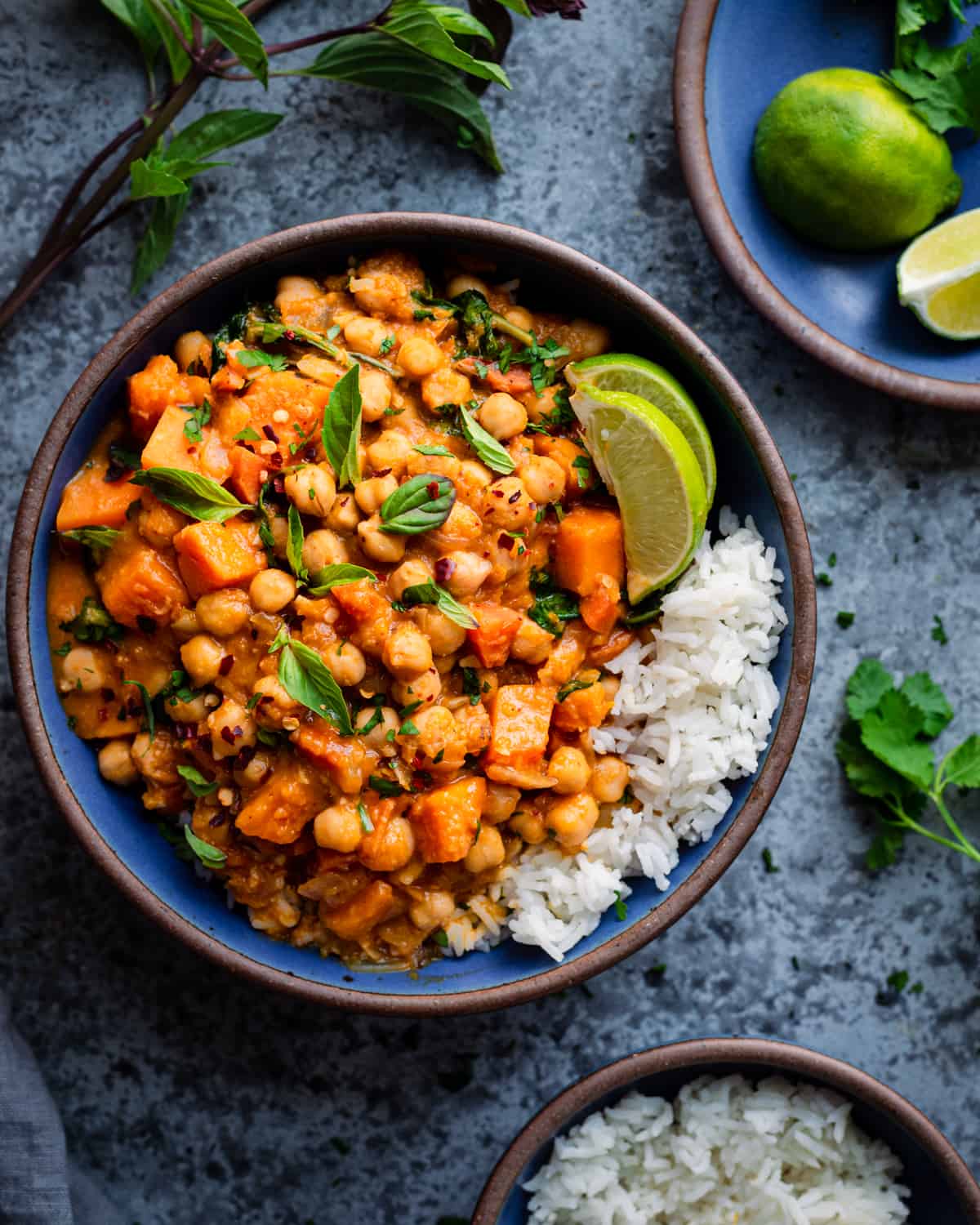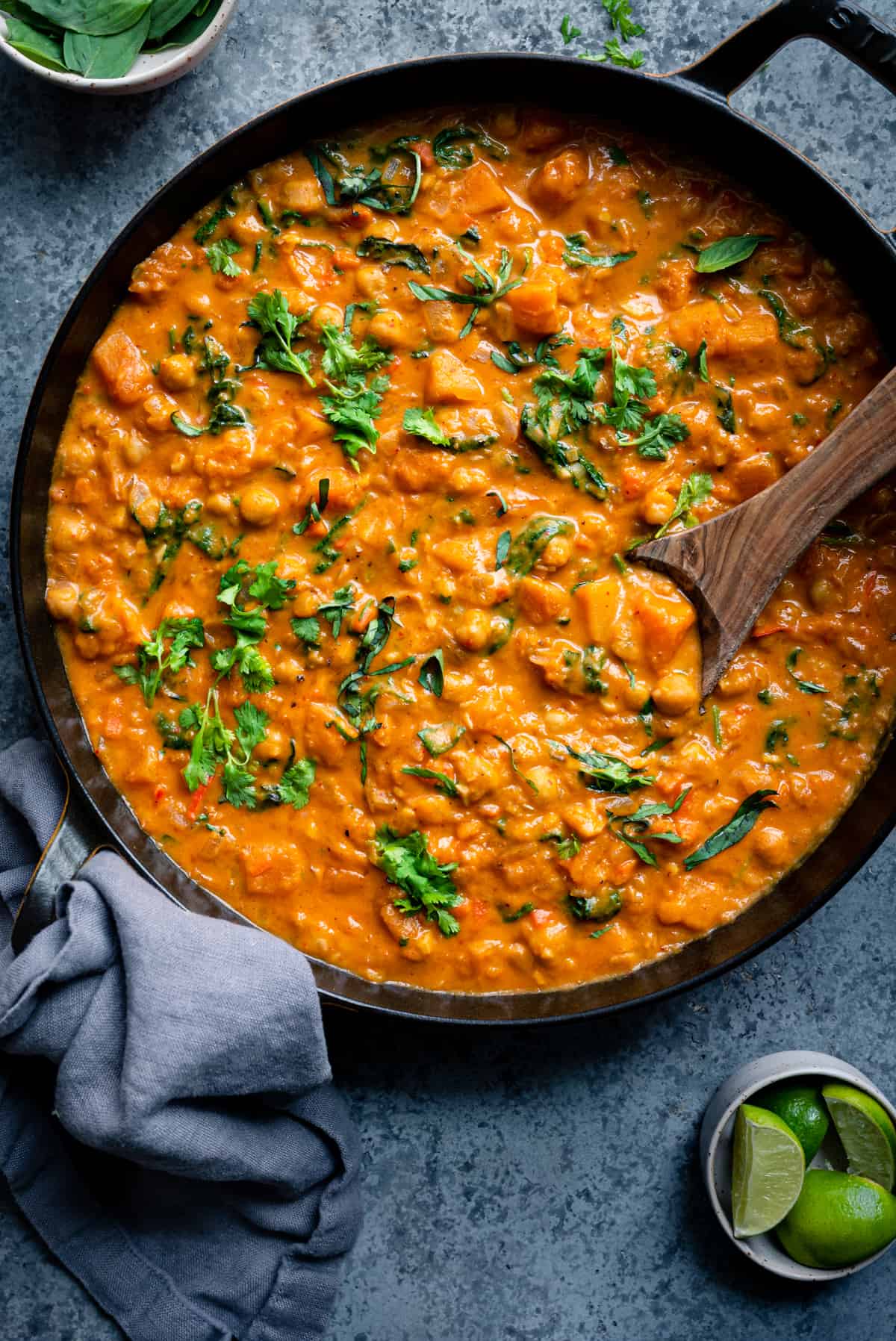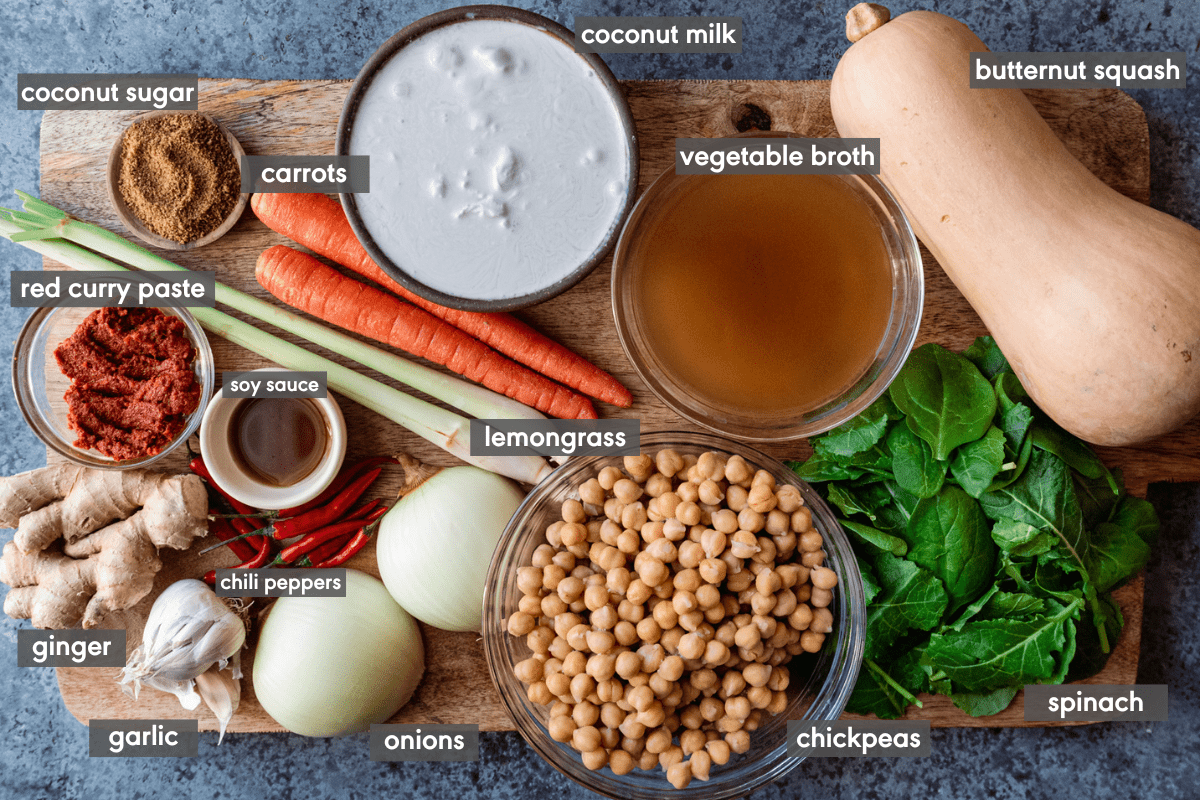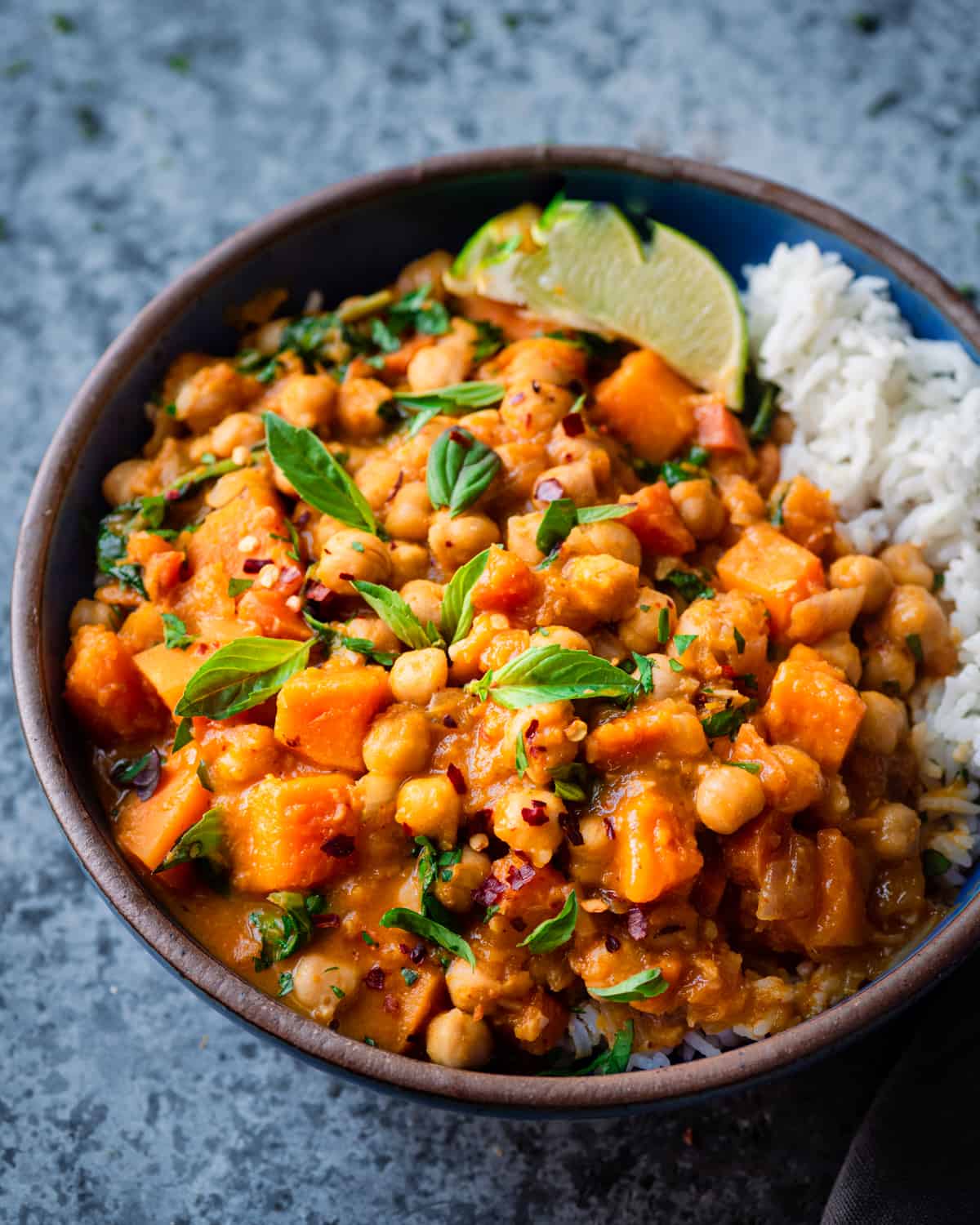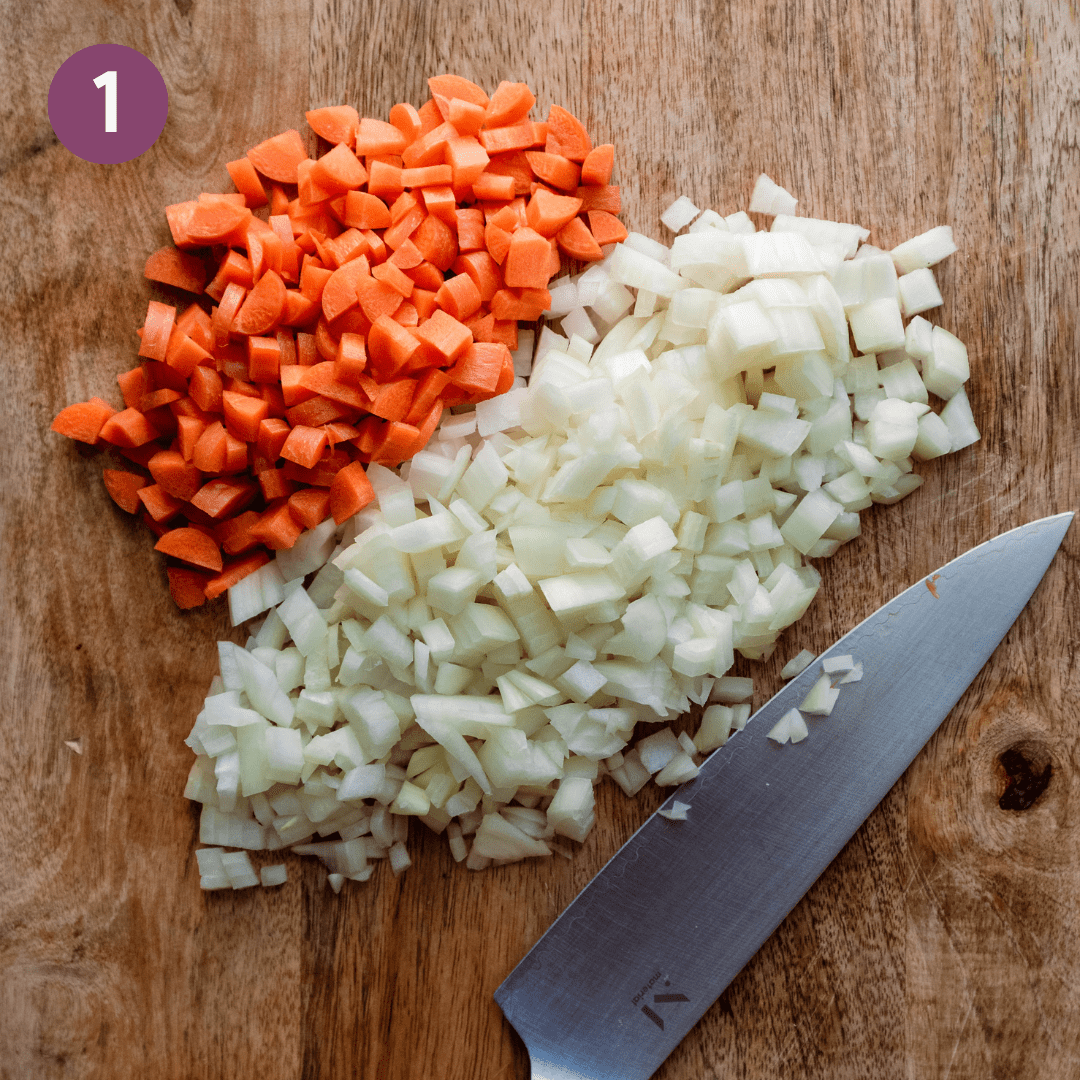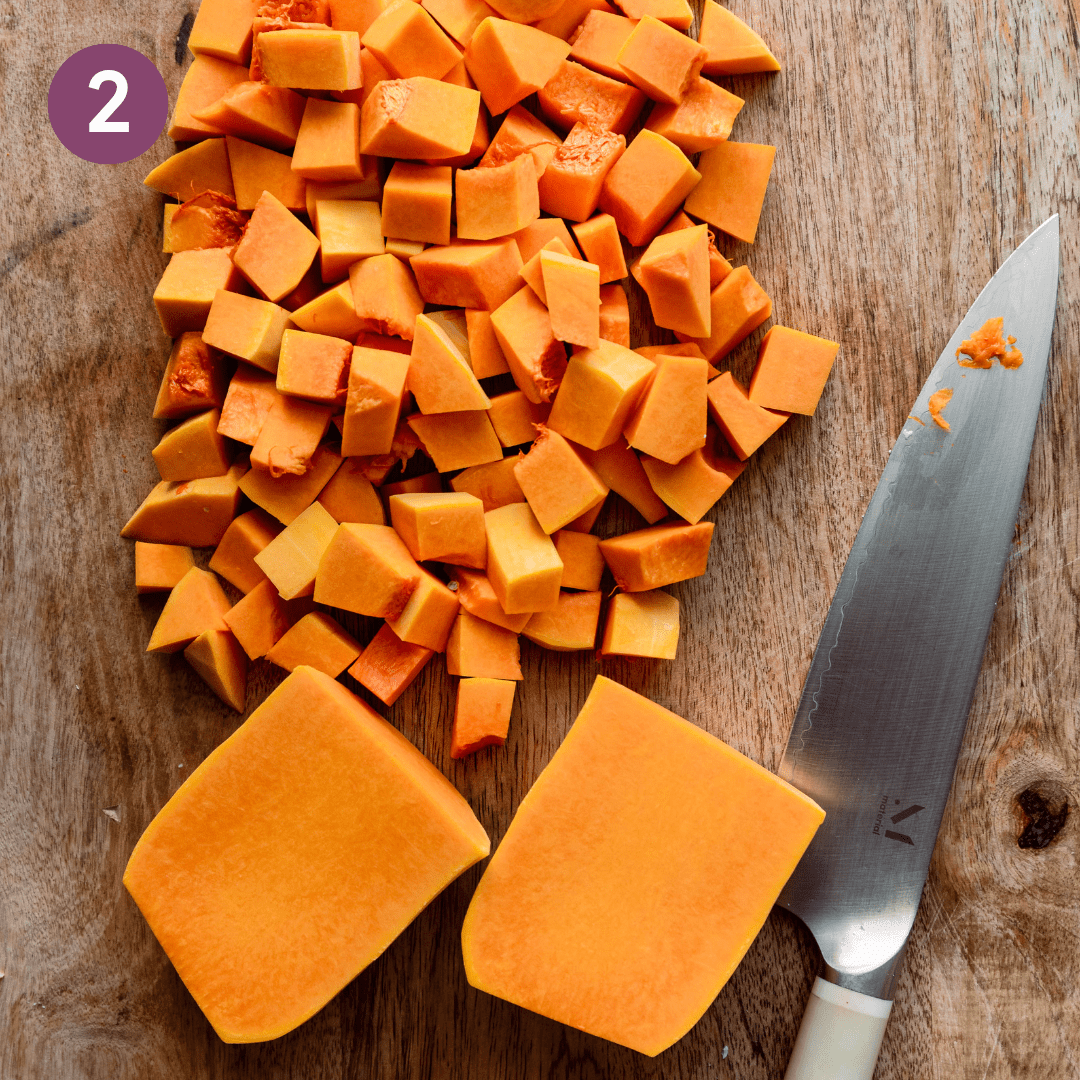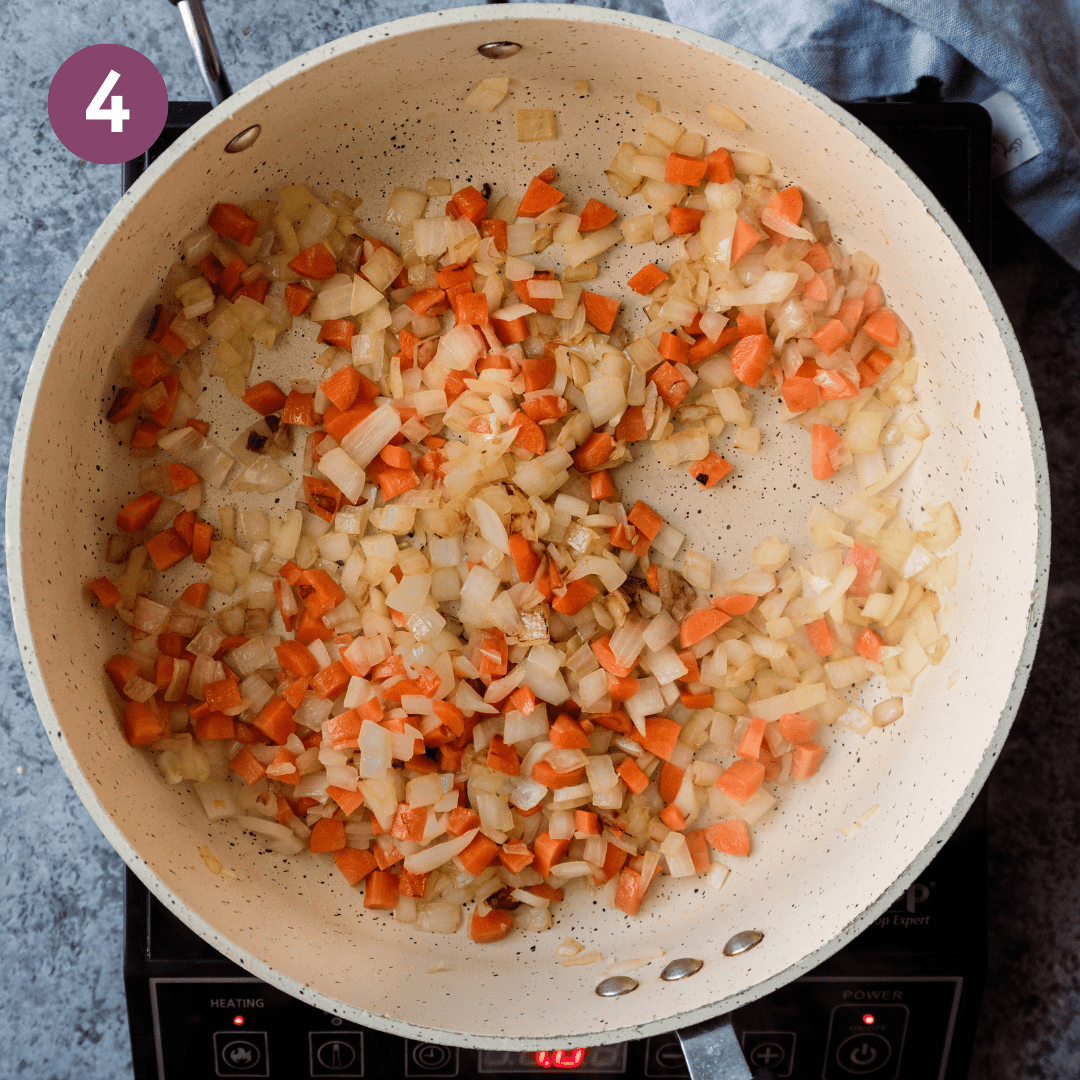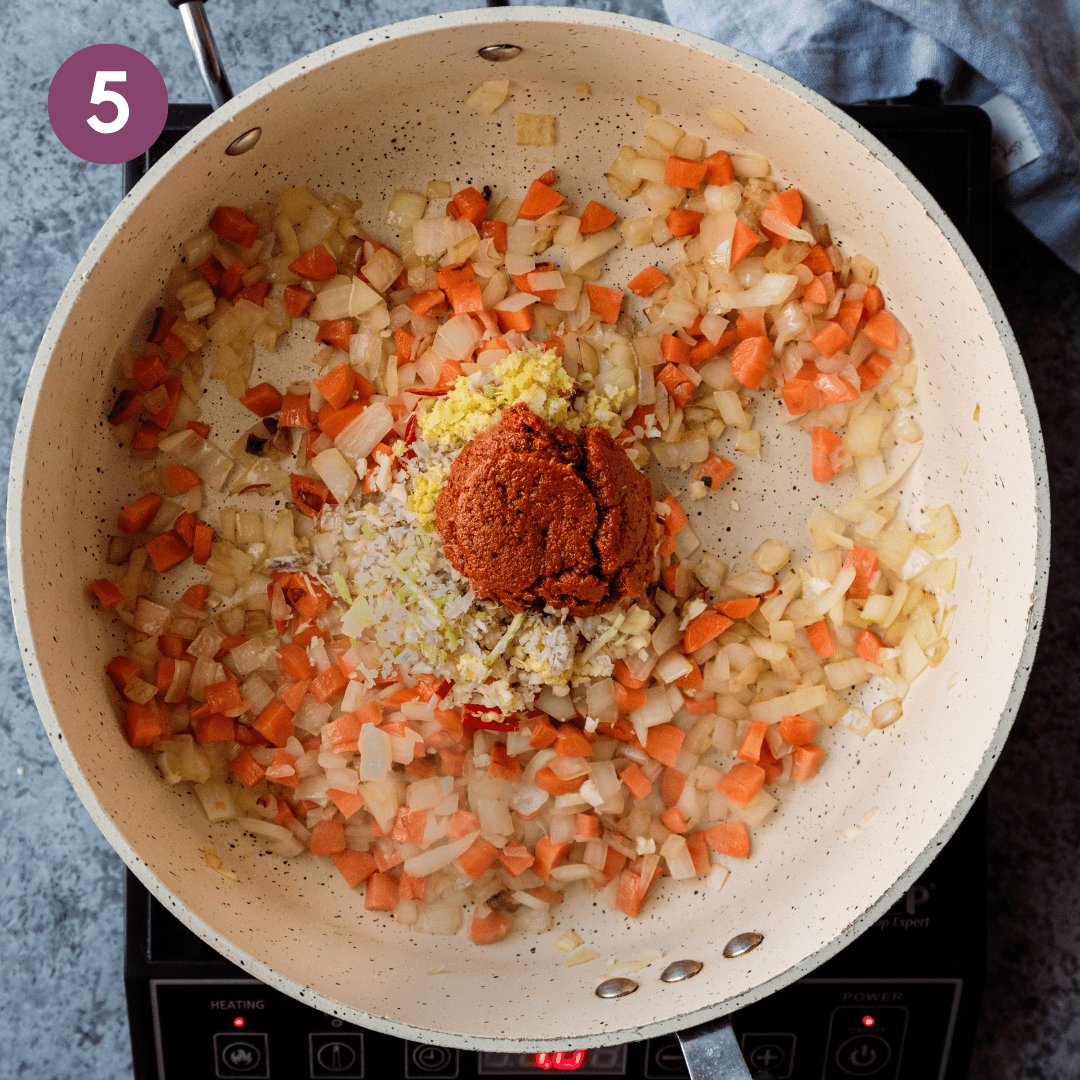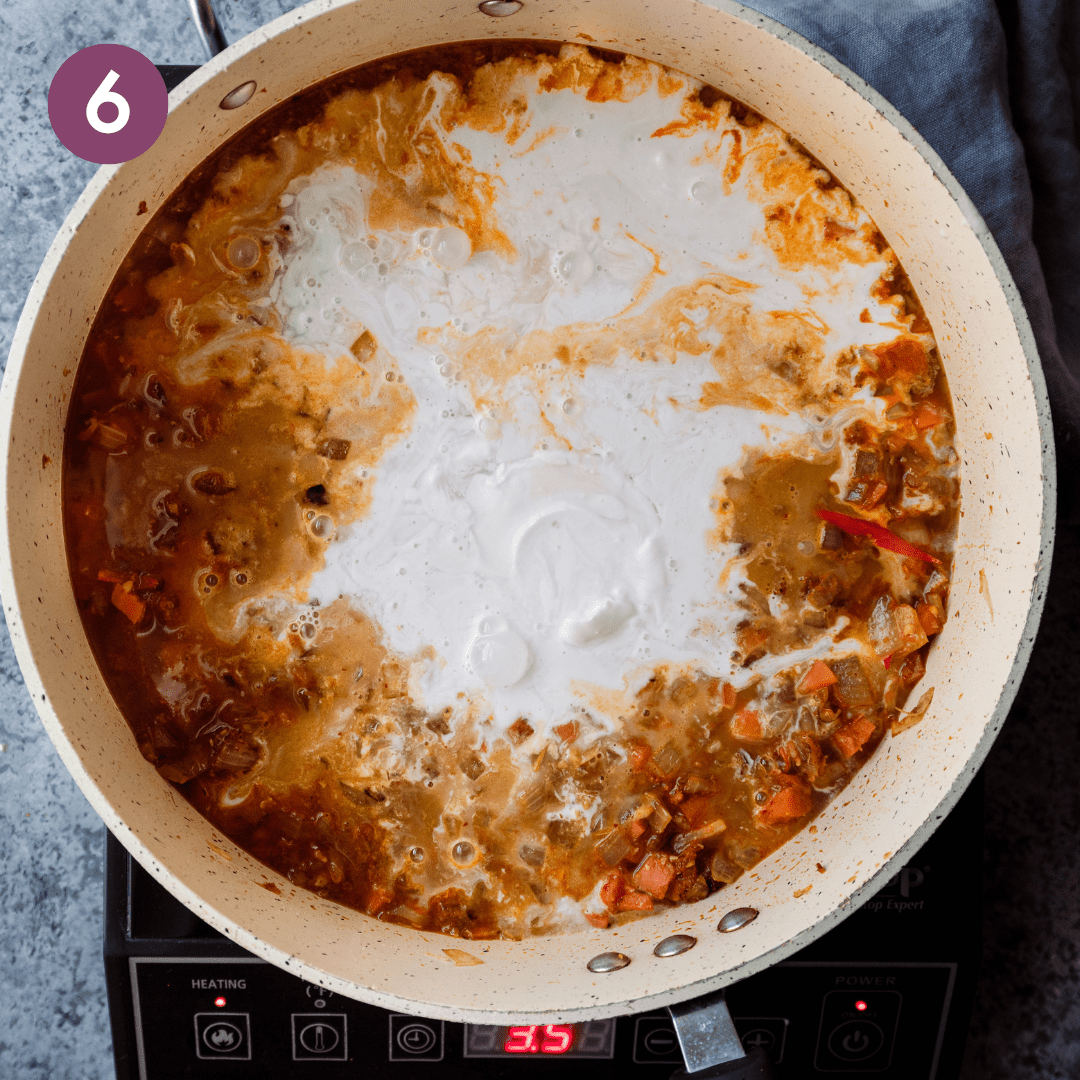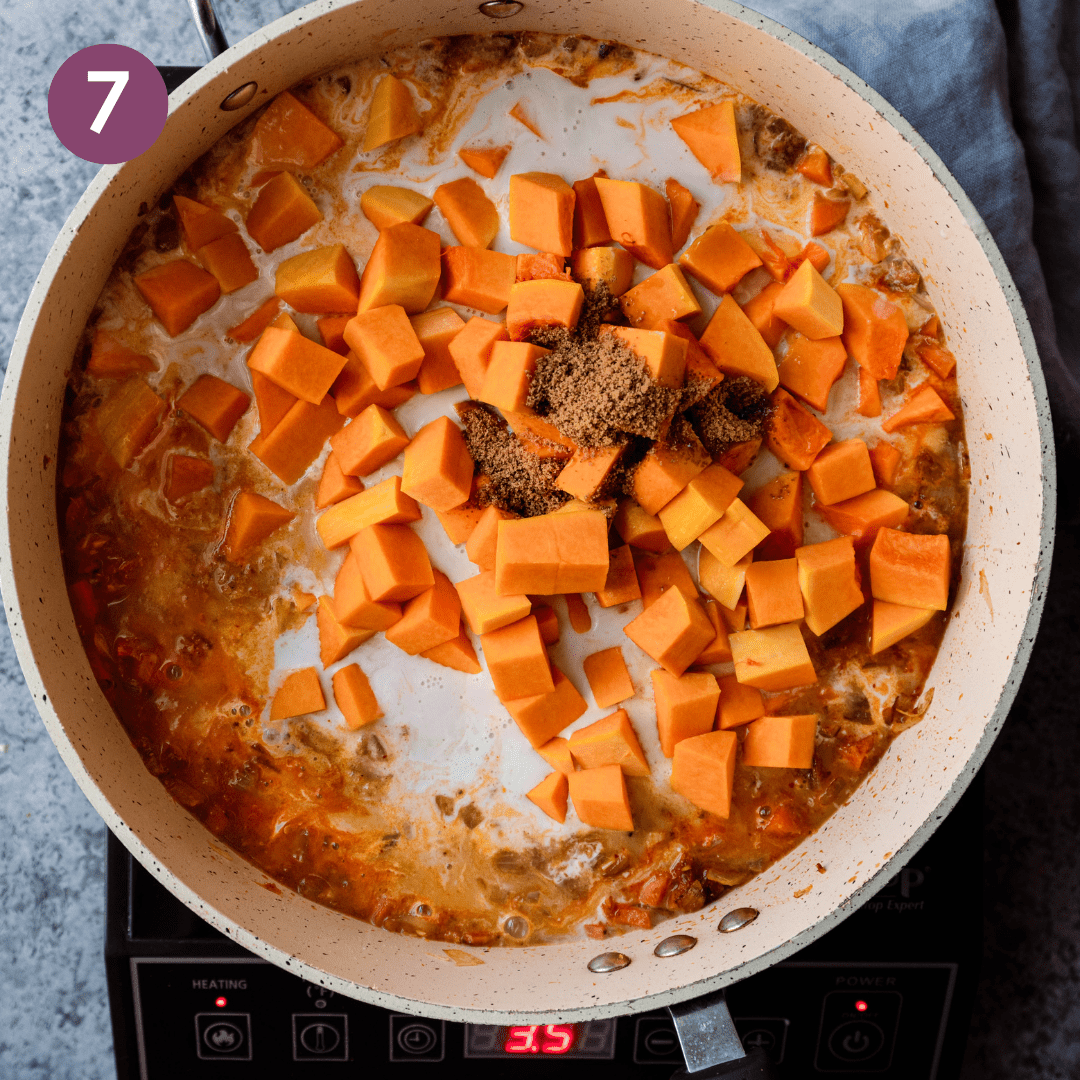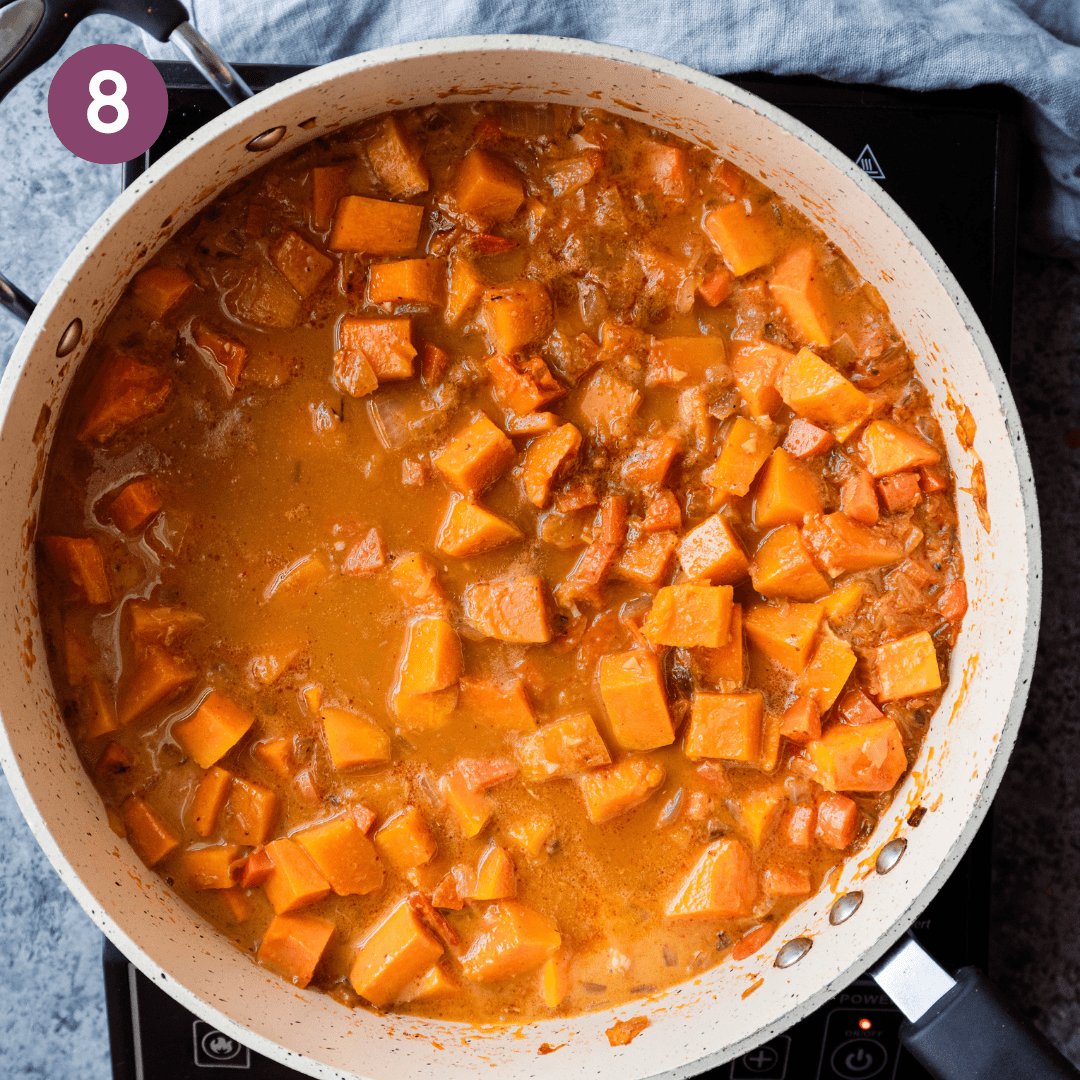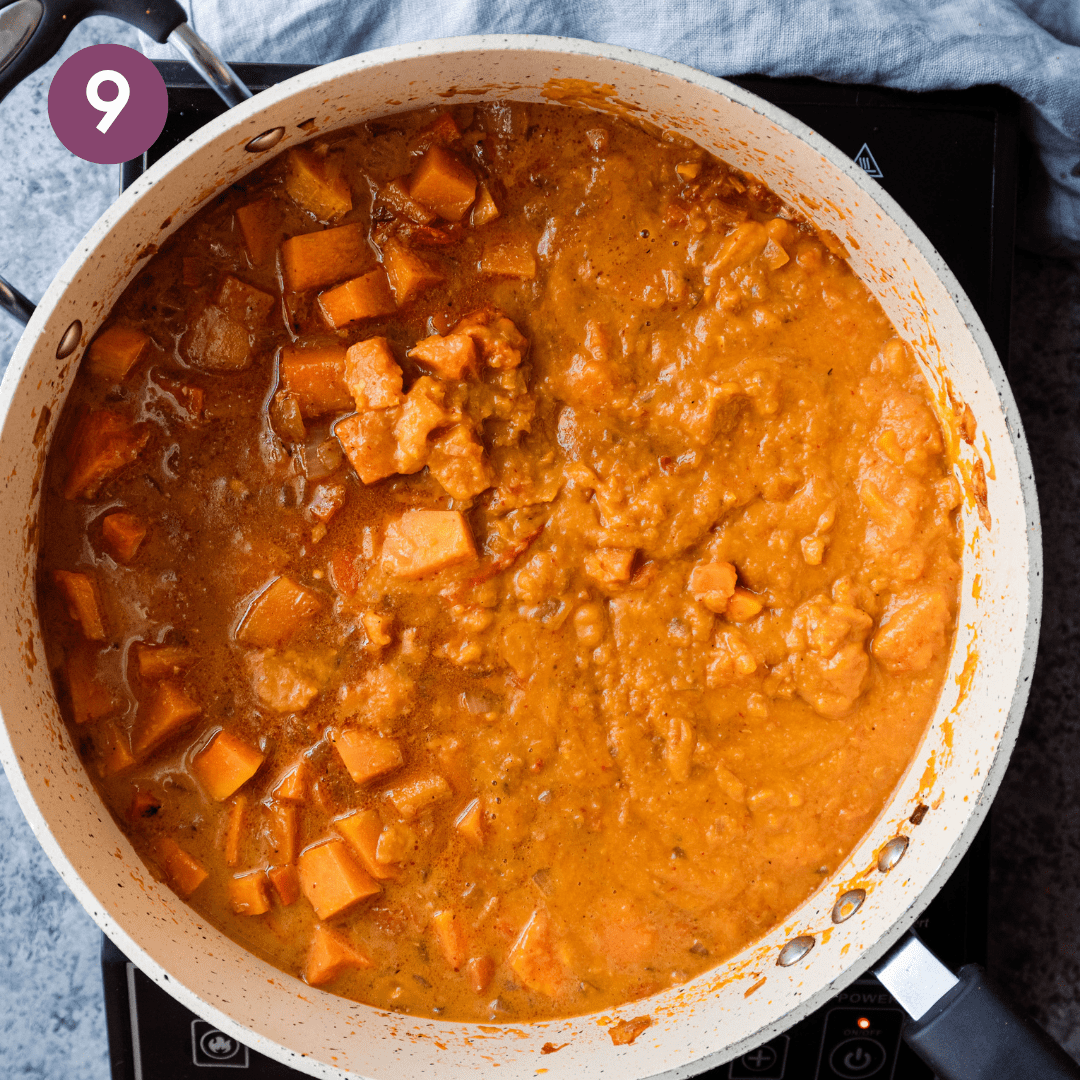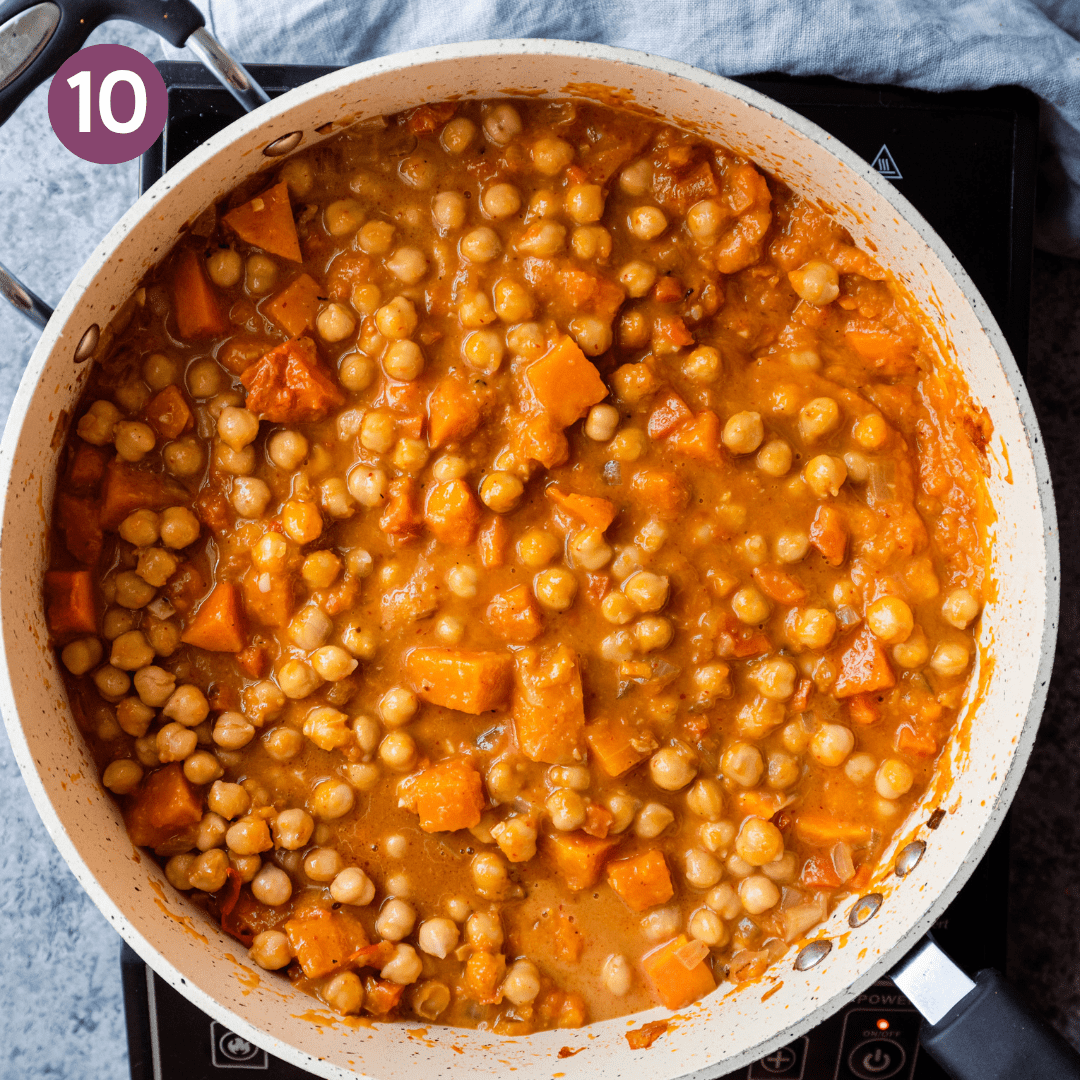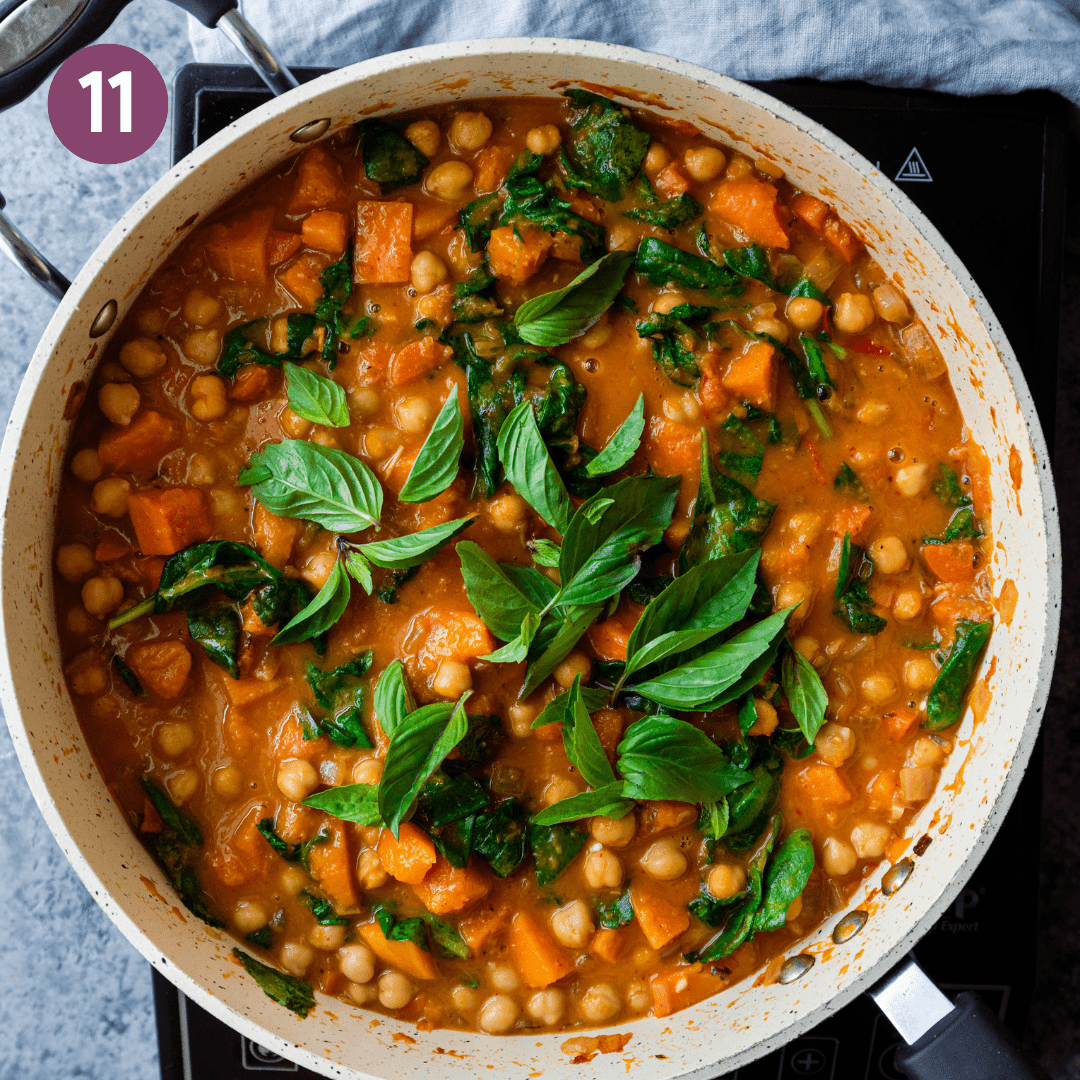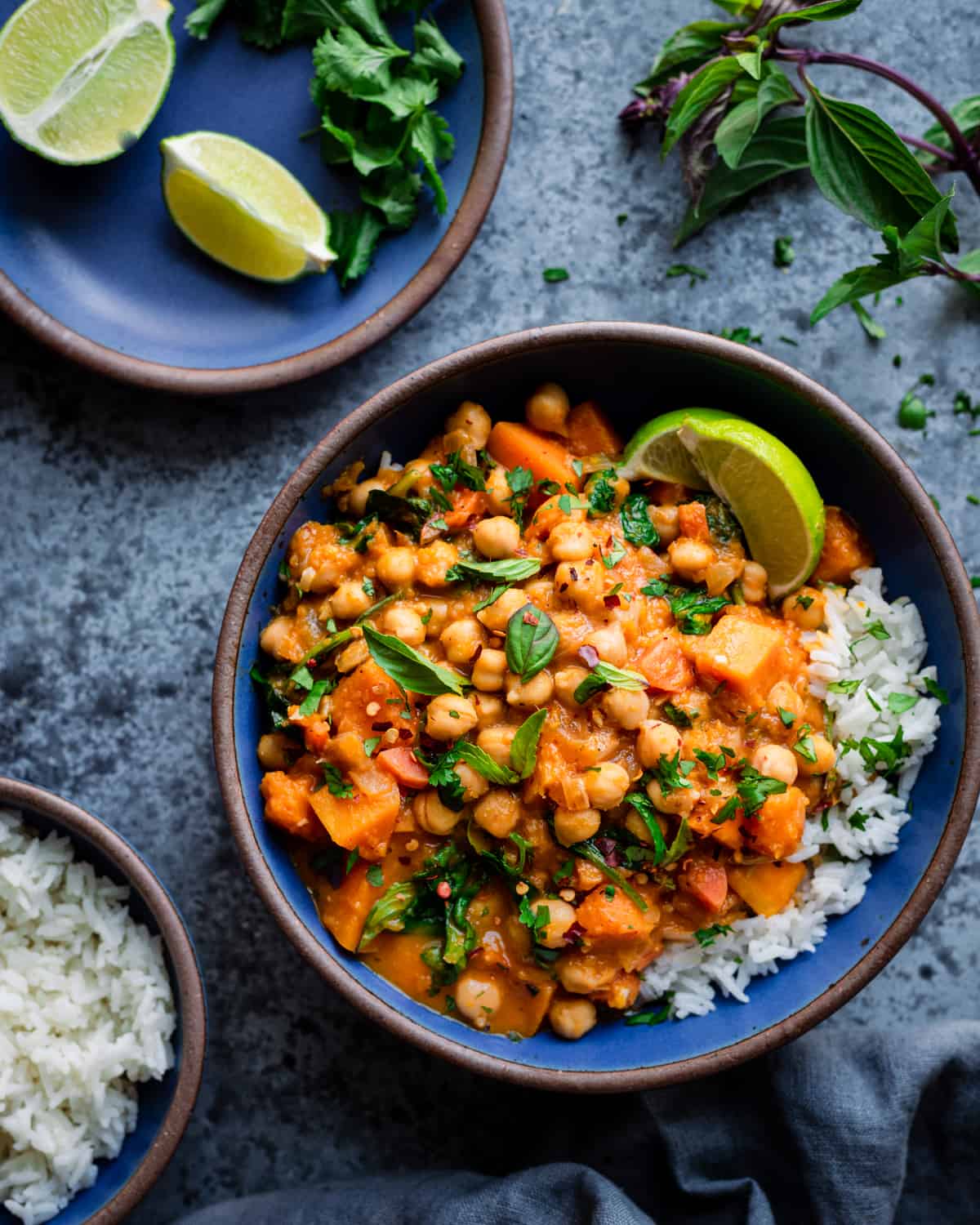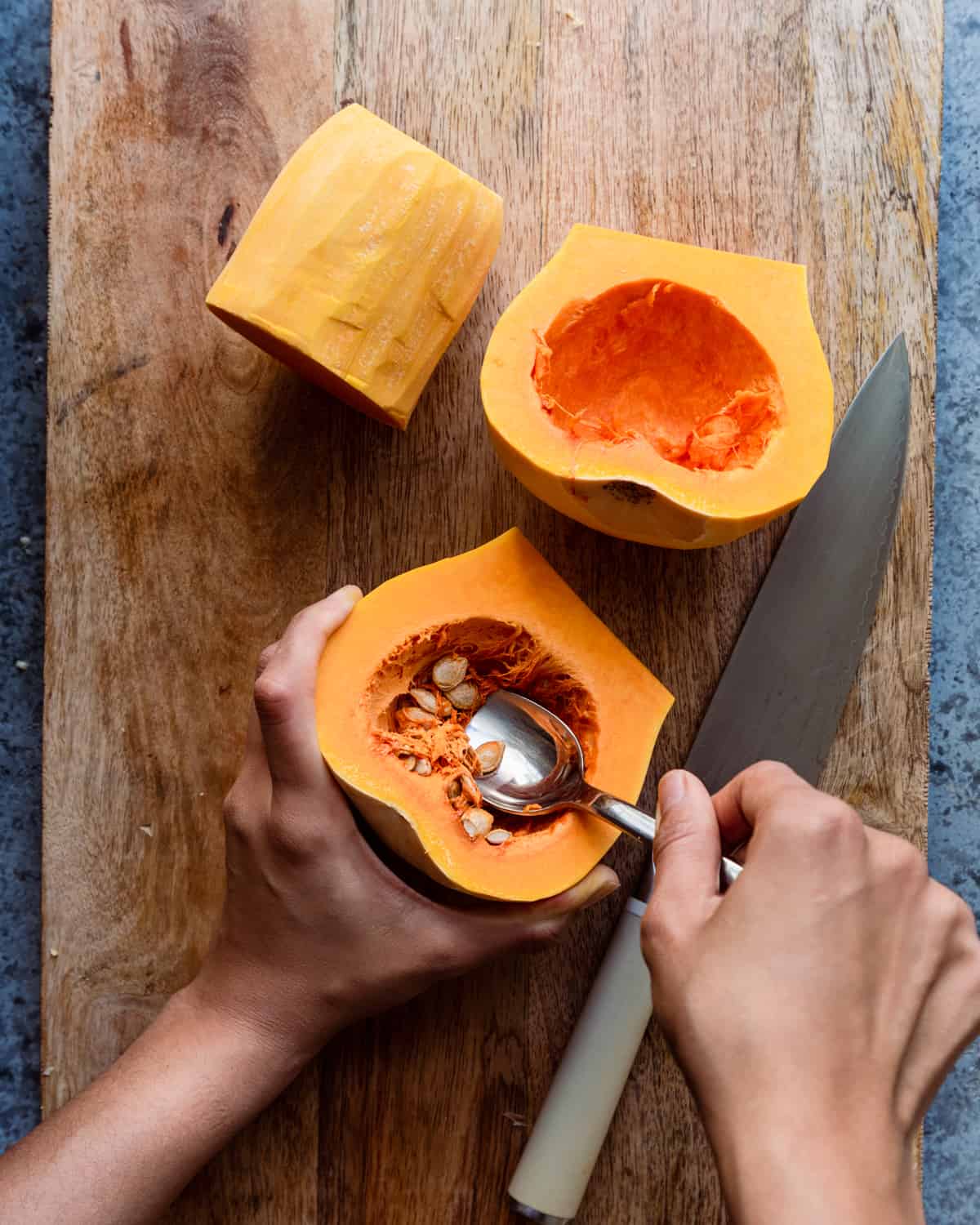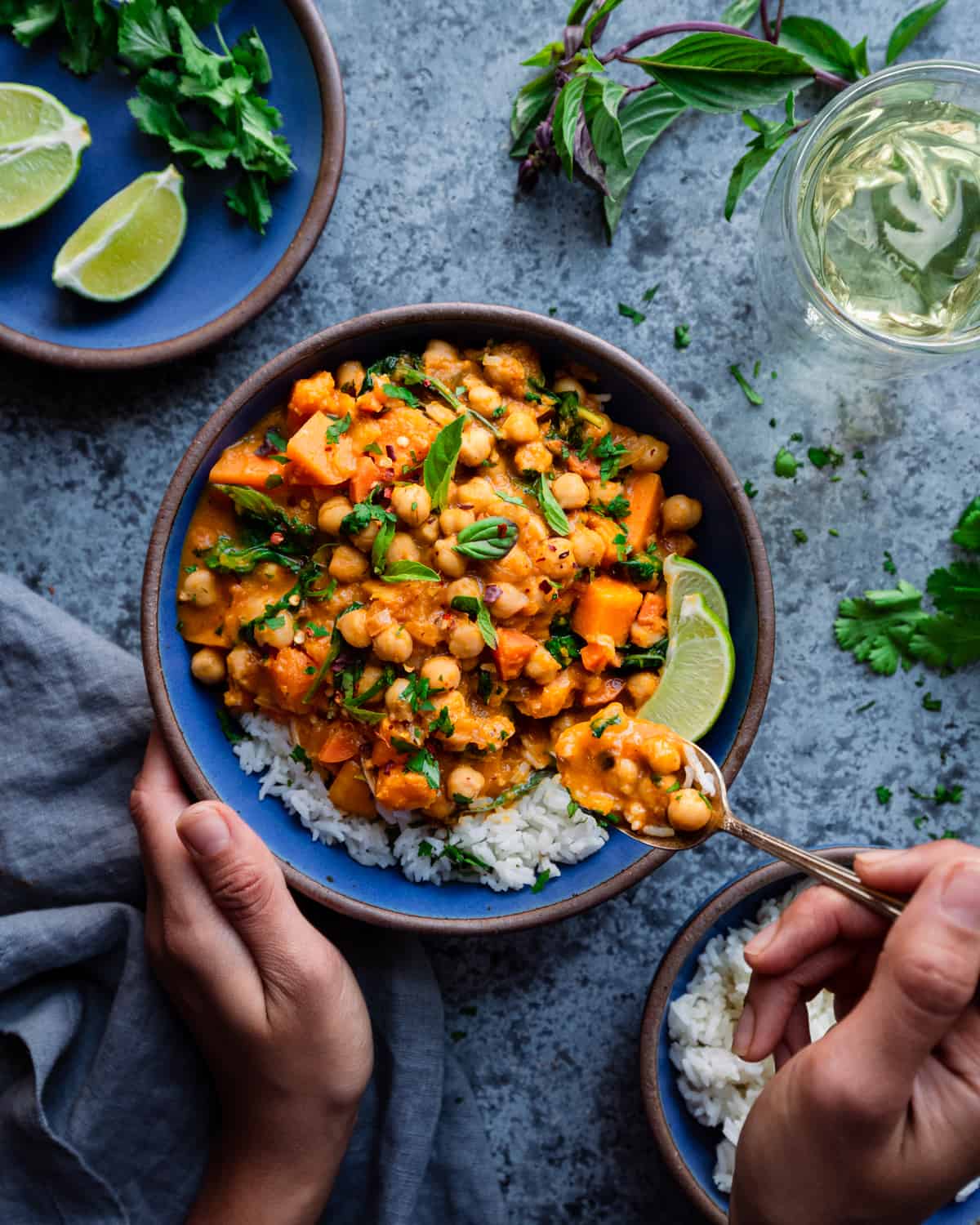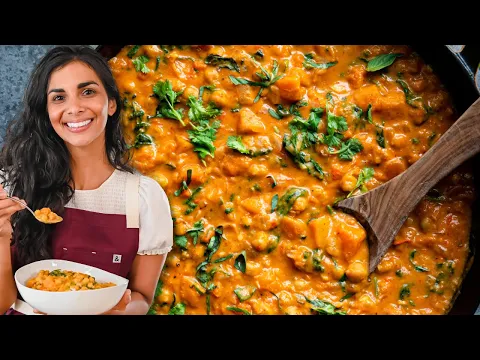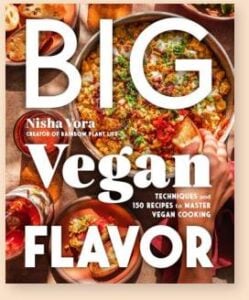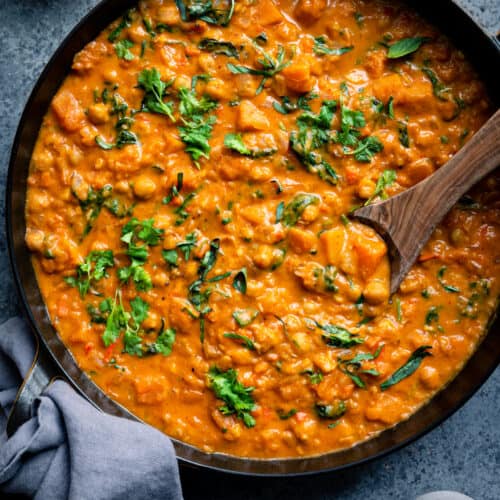It requires just one pot, can be completed in about 45 minutes, and is both meal prep- and freezer-friendly meal. At the same time, it delivers outstanding gourmet flavors and is special enough to serve to guests. If you love a good curry, you MUST try this one (I think it might be my favorite, and that’s a lot considering how much I love my fan favorite Red Lentil Curry and my easy Vegan Curry with Tofu)!
A well-balanced dinner.
This curry has it all: complex carbs from the butternut squash and chickpeas, protein and iron from the chickpeas, antioxidants from the chile peppers, satiating fats from the coconut milk to keep you full, and even leafy greens for good measure.
A careful flavorful balance.
I learned quite a lot of cooking during my month in Thailand. One of the most important lessons was that each dish should be an art in balancing flavors. Here’s how that shakes out in this recipe:
Spicy: heat comes from a good-quality red curry paste and Thai chile peppers. Sweet: subtle sweetness comes from butternut squash and coconut sugar; also balances the spiciness and sourness, as well as enhances the salty, umami. Sour: acidity comes from lime juice or rice vinegar; also balances the spiciness and enhances the salty, umami flavors. Umami: savory notes come from the soy sauce.
Authentic Thai flavors with a twist.
While butternut squash and chickpeas are not traditional in Thai cuisine, I’ve combined them with traditional Thai ingredients (e.g., lemongrass, red curry paste, soy sauce, coconut milk) so you get all the incredible flavors of a Thai curry. For more Thai-inspired curries, check out my hands-off Instant Pot Thai Red Curry Sweet Potato Soup or Thai Kabocha Squash Curry. If you have my cookbook, The Vegan Instant Pot Cookbook, the Red Curry Rice Noodle Soup and Thai Vegetable Green Curry in Chapter 6 are not to be missed! But if you’re looking for a more traditional Thai curry, whip up a batch of my Homemade Thai Green Curry Paste for a spectacular Vegan Thai Green Curry at home!
No need to roast the squash.
There is so much other flavor going on in this dish from the aromatics and curry paste that you absolutely don’t need to roast the squash. Skip the extra time and extra dish to wash.
Ingredient Notes
Butternut squash. Save some prep time and buy pre-chopped butternut squash. If using a whole butternut squash, you’ll need approximately a 2 1/2 pound (1.1 kg) squash. Lemongrass. Optional if you can’t find it, but if you have access to an East or Southeast Asian grocery store, I promise it will take your curry over the top. The lemony, minty aroma and flavor is so bright and unique. Some higher-end grocery stores like Whole Foods will sell lemongrass pre-trimmed in packages. Red curry paste. For the best flavor, I recommend seeking out a legit Thai curry paste. My favorite curry paste is from Maesri (available online or at Southeast Asian grocery stores). Aroy-D also makes a good vegan one, but they sell versions with shrimp / fish products as well, so read labels. If the commonly available Thai Kitchen red curry paste is all you can find, it will do (but it’s fairly flat in flavor). Remember: (1) Read ingredient labels—some pastes include fish sauce or shrimp paste. (2) Spiciness varies (e.g., if using Thai Kitchen curry paste, use a tablespoon more, as it’s milder than Maesri). Chile peppers. Optional, but recommended if you like a little heat in your curry. Bird’s eye chile peppers (aka Thai Chile peppers) are recommended. Everyone’s spice tolerance is different so you should customize the amount of peppers to your preference. My personal preference is to use 3 peppers, but I eat spicier food than most of my readers. If you can only tolerate some heat, use 1-2 peppers. And if you can barely tolerate heat, use a single pepper with the membrane (e.g., the white parts) removed or omit the peppers entirely. Thai basil. For garnish at the end. Another optional ingredient, but worth seeking out if you have an East Asian or Southeast Asian shop in your area. It adds the classic flavors of Thai cooking with its subtle anise and cinnamon flavors. If you can’t get Thai Basil, don’t substitute with Italian basil. The flavor is totally different and it won’t work well here. Instead, use cilantro. Lime juice or rice vinegar. Finishing a rich dish like this curry with a splash of acidity at the end helps balance the spicy and sweet flavors, and also brings some freshness to the dish, so definitely don’t skip it!
Step-by-step instructions
Dice the onion and the carrots. Chop the butternut squash into cubes (or use pre-chopped butternut squash). Mince the garlic, mince or grate the ginger and lemongrass, and thinly slice the Thai chile peppers (if using). Sauté the diced onions and carrots in a bit of coconut oil in a deep sauté pan or Dutch oven until lightly browned. Add the garlic, ginger, lemongrass, chile peppers, and curry paste, and stir frequently for 2 minutes. Deglaze the pan with vegetable broth, then add in the coconut milk, butternut squash, coconut sugar, and soy sauce. Simmer the curry for 20 minutes, until the squash is tender. Then, blend about half of the curry using an immersion blender. If using a stand blender, transfer half of the curry, blend, then return it to the pan. Add the chickpeas to the pan and bring to a simmer. Then add in the baby spinach or kale and cook until wilted. Finally, stir in the Thai basil (if using) and/or chopped cilantro.
Tips for making this butternut squash curry
Visit your local Southeast or East Asian market (if you have one). For the best version of this recipe with truly authentic Thai flavors, it’s worth seeking out the lemongrass, high-quality curry paste, and Thai basil, all of which you can find at your local Southeast or East Asian market. Smaller markets are almost always family owned and operated, so you’ll also be supporting a small business. If you can’t make it to a South East Asian market, you can still make this recipe with a few substitutions.For your curry paste, most grocery stores carry Thai Kitchen Red Curry paste, so use that. Some stores also carry Mekhala curry paste, which is better. Lemongrass may be available at higher-end grocery stores, though omit if you can’t find it, as there’s no substitute. In place of the Thai basil, use cilantro. If you can’t find Thai/bird’s eye chile peppers, try using 1 serrano pepper (2 for spicy!). Nuke your squash to make it easier to cut. If you’re using a whole butternut squash and struggling to slice it in half, pop it in the microwave (whole, as is) for 2 minutes to soften it up. If it’s still too hard, nuke it for another minute. Try this recipe with other winter squash. Kabocha squash or red kuri squash would be great here. If you want to use standard pumpkin, consider adding a bit more sugar, as it’s less sweet than butternut squash. You could also use sweet potatoes, but I’d omit the sugar entirely. New to lemongrass? Watch the video. To see how to peel and prepare lemongrass, watch the Youtube video below (starting at the 3:09 mark).
More delicious chickpea recipes to try:
Indian Chickpea Curry Tomato-Fennel Braised Chickpeas Beet Hummus Vegan Tuna Salad
If you love this Butternut Squash Curry as much as we do, please rate and review the recipe below :) It’s always much appreciated!
Watch! How to make Butternut Squash Curry
Big Vegan Flavor
Techniques and 150 recipes to master vegan cooking.
